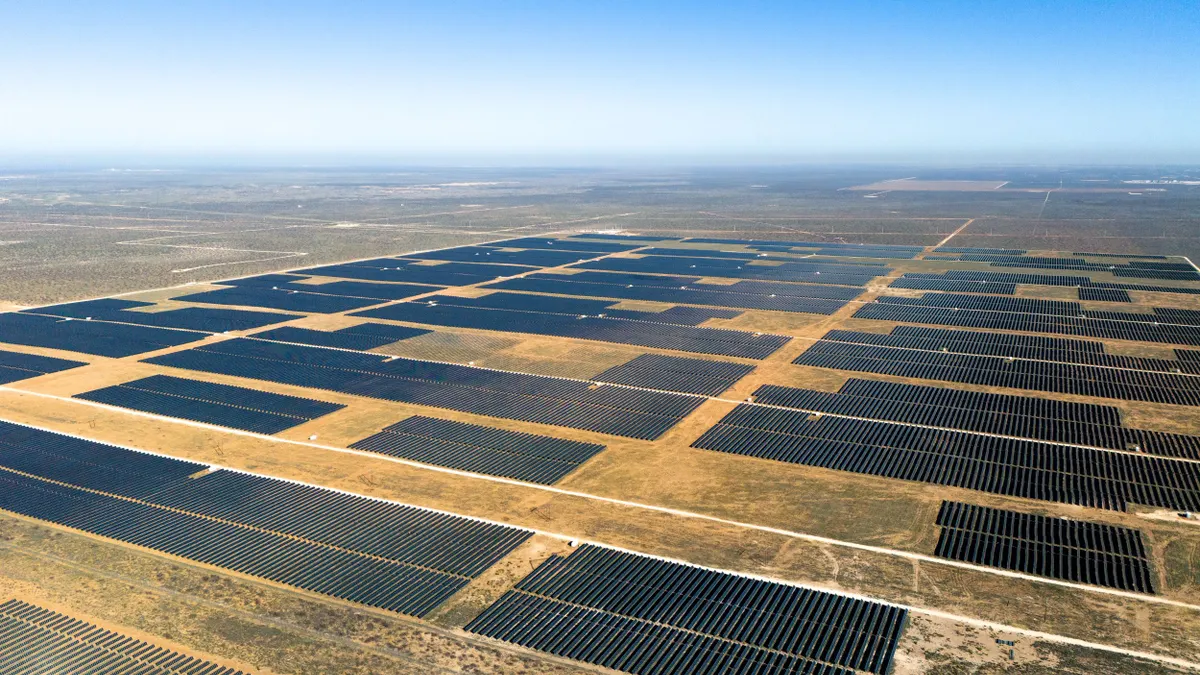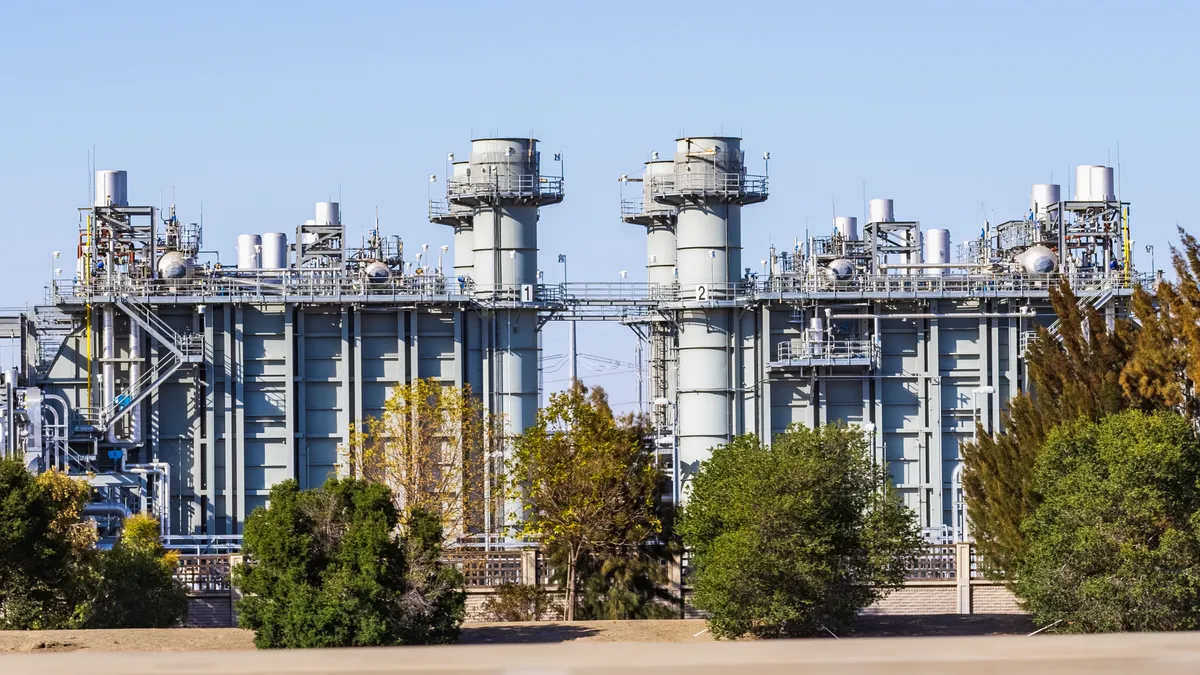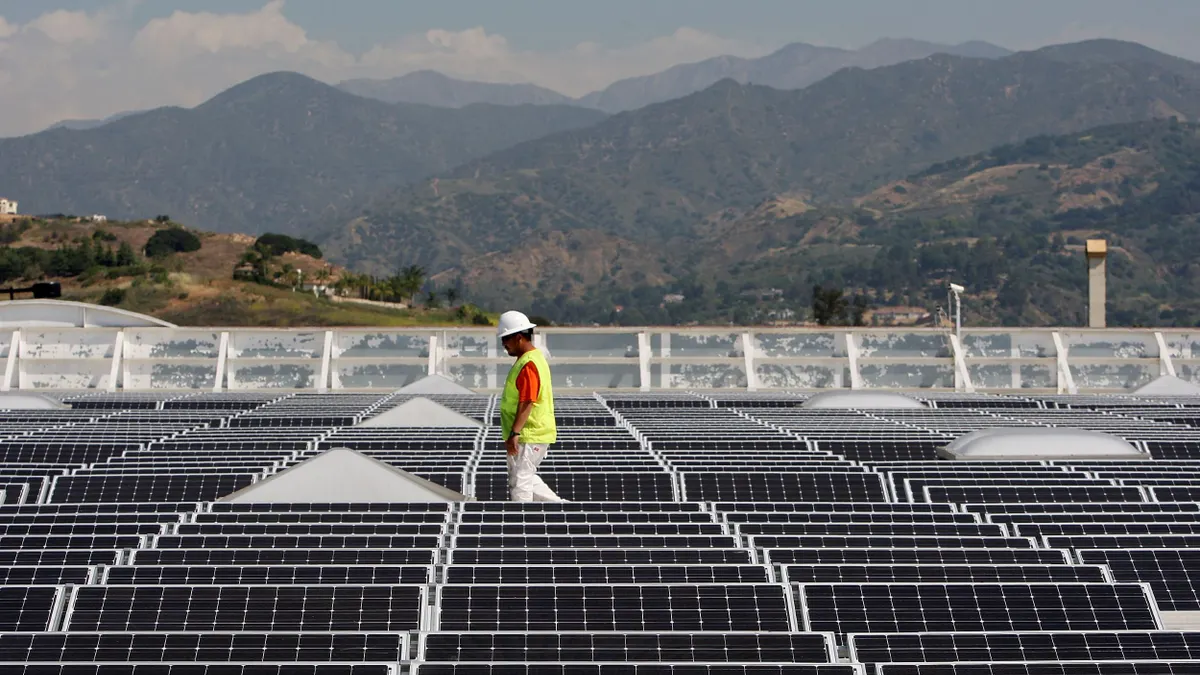Last week, Utility Dive took a look at how NRG Energy, an independent power producer, is preparing for the changing grid system with plans for increased distributed generation, renewables, electric vehicles and energy storage. In contrast, top utility executives hardly mentioned those issues in their year-end earnings conference calls.
Instead, utilities around the U.S. are increasingly focused on building transmission lines and revamping aging infrastructure. One of the reasons, of course, is power line projects offer solid returns and can be an important part of the "back to basics" strategies some utilities are favoring.
The coming transmission buildout
Let's start with Minneapolis-based Xcel Energy, which plans to spend $4.5 billion over the next five years on transmission, company officials said during an earnings call with analysts. The company expects to form a “transco” to develop Federal Energy Regulatory Commission (FERC) regulated transmission projects with an initial focus on Texas.
St. Louis-based Ameren expects to grow its federally approved transmission ratebase from $750 million at the end of last year to $2.6 billion in 2018, or by about 28% a year. As a share of the utility company's total ratebase, transmission will grow from 7% to 18% over the time span.
“We are allocating significant and growing amounts of discretionary capital to our FERC-regulated electric transmission businesses and Illinois deliverable utilities as these operate under formulaic and constructive regulatory frameworks,” Warner Baxter, Ameren president, said.
FirstEnergy plans to spend $4.2 billion on transmission in the next four years as part of the company's shift to focus on its regulated operations, company officials said during an earnings conference call.
On the East Coast, Public Service Electric & Gas (PSE&G) plans to spend $6.8 billion over five years on transmission projects. PSE&G's spending on transmission will account for about 70% of the utility's total spending.
And, Northeast Utilities, headquartered in Hartford, Connecticut, expects to spend $4.3 billion on transmission from 2013 through 2017, up from the $4.2 billion the utility company spent from 2001 through 2012.
Finally, Great Plains Energy and American Electric Power are bidding on power line projects around the U.S. through their Transource joint venture, Great Plains officials said during an earnings conference call.
OK. You get the picture. Utilities expect to pour billions into power line projects. Partly, these plans are driven by the relatively high ROEs FERC grants in an effort to spur transmission development. For example, transmission owners in the Midcontinent Independent System Operator footprint can earn 12.38% under FERC-approved rates. 37 states also have rate riders that let utilities recoup infrastructure costs as they are incurred.
However, FERC's relatively high ROEs are being challenged by Northeast and Midwest states and energy users. These ROEs could drop as consumers take a closer look at what could happen to their rates with all the planned spending.
Edison, NextEra see opportunities in distributed generation
While transmission is a major utility focus, some utility companies are also moving into distributed generation.
Edison International, for example, plans to take advantage of emerging business opportunities. “Whether its distributed solar, or let's call it more broadly, distributed energy resources. That would include solar, include efficiency programs, include storage, all of those things,” Ted Craver, Edison chairman, president and CEO, said. “We see, actually, a significant investment that needs to be made in the distribution system here in California, to really prepare the system for integrating an increase in distributed energy resources.”
Edison might also have a direct stake in distributed resources around the U.S. “We are certainly working on that,” Craver said. “We have what we think are some interesting beginnings in that area. I have kind of taken pains in the past to say, we are doing this kind of one step at a time -- it's not a bet the ranch type of deal. But I think we do see some interesting opportunities there primarily aimed at commercial and industrial customers, and would be not just in our territory, but outside.”
NextEra Energy Resources has been looking at rooftop solar as well. NextEra is focused on rooftop solar for commercial and industrial customers, but doesn't believe the residential market offers a good opportunity for the company, Moray Dewhurst, CFO, said.
In some parts of the U.S., solar is “crowding out” wind generation, Armando Pimentel, NextEra Energy Resources CEO, said during a conference call with analysts. “The economics of solar have clearly improved across the board,” Pimentel said. “It's not just the overall cost of the panel or the balance of the plant, but it's also small changes in efficiency. So although wind economics have clearly improved in some areas of the countries, primarily the West and the Southwest, it's clear that solar is a better alternative.”
Electric sales up, down depending on region
We can't let a review of earnings calls go without looking at power sales. We've all heard that energy efficiency, appliance standards and conservation will keep electric demand growth in check in the coming years. At best, growth will move ahead at a sluggish pace.
However, a look around the U.S. shows the picture is more complicated. Some areas are seeing fairly robust growth while electric use continues to fall in some parts of the country. The issue is important because it can affect utility and power generator income and determine the pace of power line and power plant construction.
Here's a quick spin around the country with a look at “weather normalized” estimates that attempt to strip out the effects of weather on power sales.
Starting on the East Coast, PSE&G's sales jumped 2.7% in the fourth quarter, but fell 1.5% last year.
Electric sales at Virginia Power, a Dominion subsidiary, jumped 1.3% last year and the company expects sales to climb 1.5% this year. Dominion expects about half of the growth to come from data centers.
Southern Co.'s utilities posted a 1.7% jump in electric sales in the fourth quarter last year on a major increase in industrial sales, bringing total sales for the year up 0.4% over 2012. Looking ahead, Southern expects total sales to grow by 0.7% this year, driven by a 1.1% increase in industrial sales.
Entergy expects its six utilities to see 2% to 2.25% annual electric sales growth in the next three years.
Duke Energy's electric sales grew 0.6% last year and the company expects them to grow about 0.5% this year.
In the Midwest, electric sales for American Electric Power's (AEP) utility subsidiaries fell 1.6% last year. AEP expects residential sales to drop by about 1% this year, but overall sales to be flat. “We think it's largely being impacted by a lot of the energy efficiency programs that we have across our service territory, with Ohio, Indiana and some other states having some pretty aggressive programs,” Brian Tierney, AEP CFO, said.
DTE Energy's sales fell 1% in 2013 when a drop in residential and commercial sales more than offset a 3% gain in industrial sales.
Ameren's residential and commercial sales grew 0.6% last year while industrial sales fell 3.2%, mainly on a decline in manufacturing in Illinois. Ameren expects residential and commercial sales to fall 1% and industrial sales to slip 0.7% this year, mainly on energy efficiency programs and federal lightbulb standards.
FirstEnergy's retail sales increased 1%, with industrial sales jumping 2% from the shale gas boom in the region. Commercial sales increased 0.5% and residential sales climbed slightly. FirstEnergy expects retail sales to increase 0.6% this year.
Kansas City Power & Light and GMO Missouri – Great Plains subsidiaries – saw residential sales jump 3.1% last year, the strongest increase in five years. Total sales increased 1.4% last year and the company expects annual sales to increase 0.5% to 1% through 2016.
In the Southwest, Arizona Public Service's sales fell 0.5% last year, but the company expects sales to grow by about 1% a year through 2016.
Sales for Public Service Co. of New Mexico, a PNM Resources subsidiary, fell 1.8% last year, mainly because of the loss of an industrial customer. Residential sales fell 0.7% and commercial sales dropped 0.8%. In contrast, sales at PNM Resources' Texas-New Mexico Power, which serves parts of Texas, jumped 2.6% last year, reflecting the strong economy in the state.
On the West Coast, Portland General Electric's (PGE) sales were flat last year. Including 1.5% energy efficiency savings, PGE expects its sales to increase 1% this year, driven by a jump in sales to the industrial and high-tech sector.





















